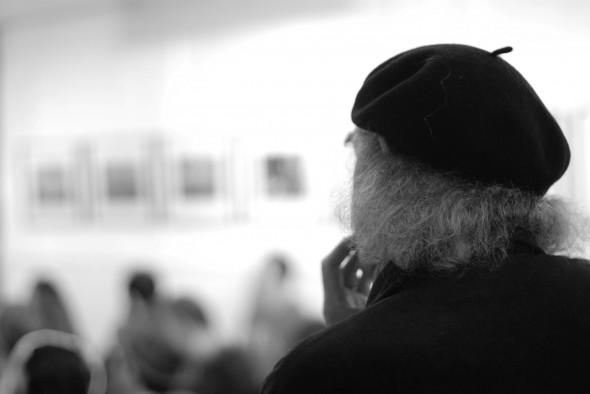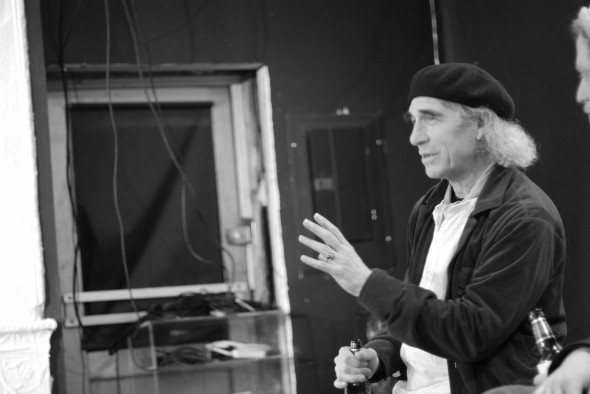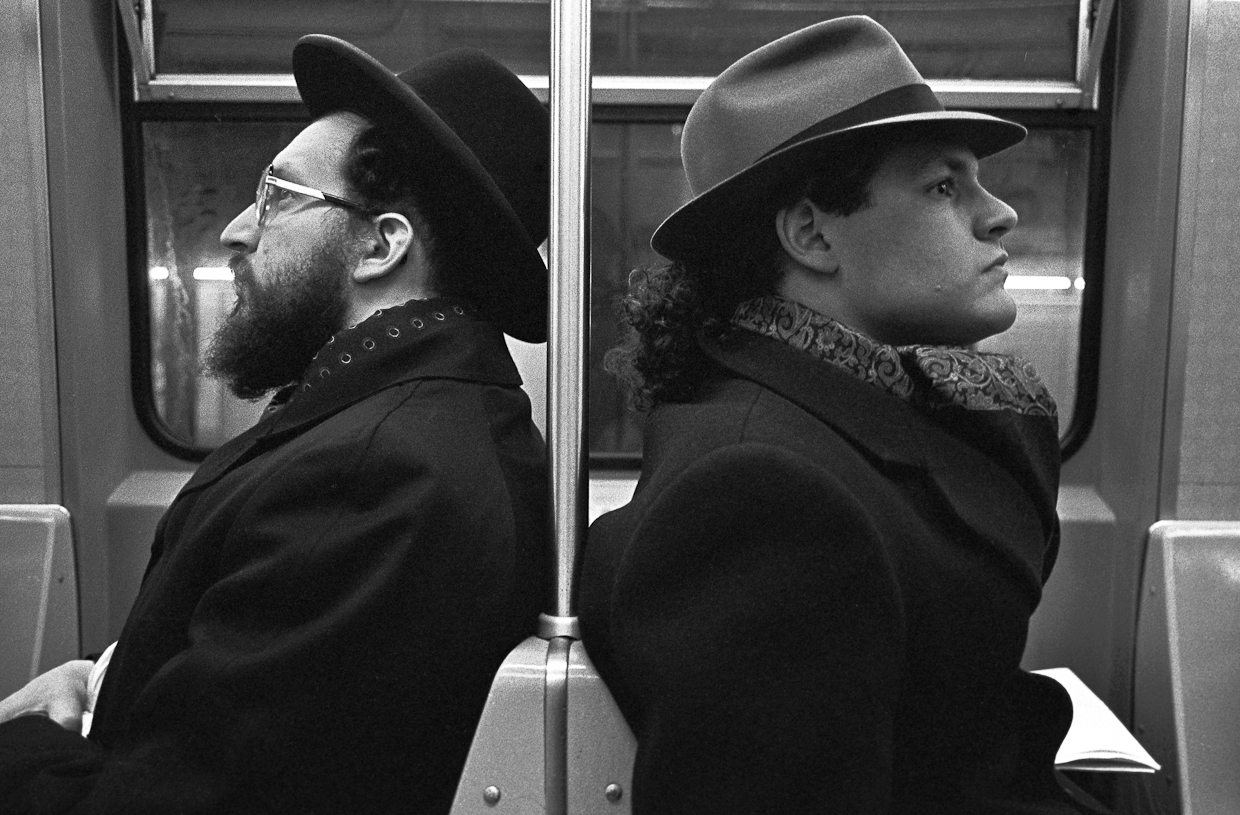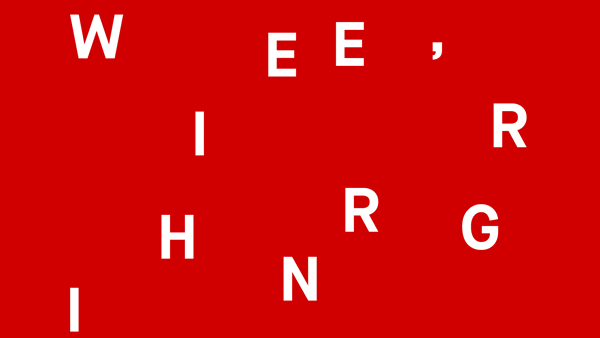
Order Audience Member #2: Regarding Brave New York: Is it ongoing over the course of 12 years, how did you arrive on 12 years, did you set out to do 12 years or when did you decide the film was finish?
I decided it was finish because Dan (the editor) came to town (laughs), I mean there was no other chance of working with him, and I mean it seemed to me that 9/11 was, you know, that was the exclamation point on everything.
I just wanted to see what happened in the neighborhood, you know, it’s a loose chronology, it’s not the straight through line, but as you can see, the way I work I’m shooting things knowing that I’m going to combine later on, maybe it doesn’t always work, I don’t know, I’m sort of documenting on a daily basis and then thinking “Ok, in the future, at some point, I’m going to start putting these things together.” And then if you accumulate enough things, if you’re fortunate, it’s start to organise itself a little bit. You say “Ok there’s this, and there’s that, and wow! That would go together, and that would go together!”
Is this totally like inventive narrative. Is the biggest fiction of all! At least in a fiction movie you make a documentary of the script, it’s truer to reality in a funny way, but with documentary you put things out of order and you are creating a completely invented fiction. It’s more fictional than a fiction movie that has a script… that’s fictional, and it’s more fictional than that! It’s weird, and yet it’s made out of documentary elements. So that’s what I think I’m doing, I’m writing my own script but I don’t have it in mind first, but everything you shoot on a daily basis informs the next day a little bit.

Audience Member #3:You have some images, specially in Brave New York, that work on an angle, and do they start out that way or did you see them in the editing?
Everything is short the way you saw it. The angle, you know, all of these comes to me from still photography. But the angle very often is just a response, you know if you angle the camera you can get more of a frame. I mean if somebody is standing here and somebody else is standing other place, you can’t get them in the frame if the frame is horizontal, but if you tilt the frame you can get them both within the frame. I’m not saying that would be a good frame! But at least you can get them in! Sometimes it works, sometimes it doesn’t. The angles frame can work or it can fail, it depends.
Garry Winogrand was famous for that and he had a great effect on me, too. But also the interesting thing about angling / tilting the frame is that it always makes something straight that isn’t straight, right? So if your head is tilted this way and I tilt the camera in the same direction your head is now straight and everything else is tilted, but your head it’s straight! So it’s a way actually to using the frame to draw attention to the subject matter. It’s a way of manipulating the frame itself. It’s still a horizontal frame, but within the horizontal it’s tilted. It’s a way of drawing attention to what you want to highlight in the way you frame it.
Audience Member # 3: So you did it on purpose? You didn’t just stumble on it?
Richard Sandler: No. It was done on purpose. You know I’ve been accused of being derivative. Every photographer in the post-Garry Winogrand world, he’s such a huge figure in the world of image making, every photographer that tilts after Winogrand is accused of copying.
______________________________________________________________________
About the photographs of A Former New York that were exhibited from December 9, 2012 to January 13, 2013 until, Richard explained:
“The photographs in this show were made in New York City between 20 and 30 years ago, and they depict a crazy time that lives in limbo: they are too young to be the historical records of the fuzzy past, and way too old to resemble contemporary culture, now moving at warp speed. These pictures of the recent past reveal a time just before the proliferation of computers, cell phones, pods, pads, digital cameras and the internet: there was no way to filter the realities of the broken city, and there was no refuge in virtual space. For better and for worse one was simply ’on the street,’ in public space, bathing in the comforts, (or terrors), of the human sea.
In the subways, graffiti tags and spray painting exploded onto every surface and whole subway cars were “bombed,” windows and all. Above and below ground, crime and crack were on the rise, rents were cheap, and tourists didn’t come here. Times Square and East Village streets were drugged-out, and dangerous, but they were also home to thousands of artists and dozens of art galleries and music clubs. In mid-town the gaudy rich wore furs in unprecedented numbers, Ronald Reagan was president, and like now, ‘greed was good.’ To some, the New York City of the recent past was a hell on Earth, yet to others it was one of New York’s most fertile artistic periods. For me the 80?s streets were a photographic celebration and I danced with the city’s ghosts. I shot 4 – 5 rolls of film nearly everyday, on the street and, in the subways. Luckily, my head was never cracked open by a crack-head.”
For more information about Richard Sandler’s work and info you can visit: www.richardsandler.com
The event was presented along with Filmwax, which is a film series primarily based in Brooklyn and programmed by Adam Schartoff. The events are intimate by nature and include an eclectic mix of narrative and documentary features, always independent. Screenings are followed by discussions with filmmakers, a film’s subjects, talent, or crew. Partner venues have included the Rerun Theater, the Brooklyn Museum, the Brooklyn Society for Ethical Culture and the Maysles Cinema. For more info visit www.filmwax.com.






